The cheering crowds in Trafalgar Square belied the grim reality for British citizens in 1945. Britain’s economy was in ruins, its empire was depleted, its global influence waning to that of the United States and the Soviet Union. Before the summer of 1945 was out, Churchill’s government, the symbol of British defiance, had resigned. By the end of the decade, Indian independence was a reality, the empire had collapsed, and the British navy, by then beyond its means to luxuries, was in mothballs. Even the survival of the monarchy was being questioned in parliament, pubs, and the press. Then, in the winter of 1952, King George VI, himself a reluctant monarch who had ascended to the throne after his brother’s abdication, died at the age of 56. He had been king for just 15 years.
So it was that a tired, dispirited, disheartened nation, still dealing with wartime food shortages and rationing, still facing the wreckage left by the German Blitz, welcomed a new monarch, Elizabeth II. Her seven decades as queen had been turbulent. There had been the Troubles in Ireland, the decolonisation of Africa, the Cold War, the Race to the Moon, the containment of communism, the end of empire. There had been political scandals, family scandals and a Britain that had moved on the world stage, allied with the United States and NATO, but still determined to uphold British interests. Here are ten highlights of the reign of Her Majesty Elizabeth II, the longest-reigning monarch in British history.
10. Suez Crisis of 1956.

In 1956, Egyptian Gamel Abdel Nasser nationalized the Suez Canal Company, seizing control of the major waterway. The company, largely owned by British and French shareholders, controlled the operation of the vital waterway. Complex intertwined geopolitical and economic goals involving Britain, France, the United States, the Soviet Union, Iraq, Egypt, Israel, Jordan had turned the region into a powder keg, abundantly fueled by the rivers of oil the region controlled. In 1956, Israel, backed by France and Britain, launched a military invasion of the Suez Canal to regain control of the canal, an action sometimes referred to as the Second Arab-Israeli war The Soviet Union supported the Egyptians. The United States, fearing Soviet intervention and actions in Europe, condemned the Franco-British invasion.
The Suez Crisis escalated into a full-scale military conflict in 1956, involving land, air, and naval forces on a scale that rivaled the Mediterranean theater of World War II. The United States used military, diplomatic, and economic pressure to force Britain and France to end their invasion. American and allied aid to Nasser alienated the Israelis. The pressure eventually led to the fall of the British government led by Prime Minister Anthony Eden. Despite some military successes, Britain and France were forced to withdraw their troops. The negotiated settlement, which, like all Middle East agreements, laid the groundwork for future crises, humiliated both the British and the French in international circles.
The Suez Crisis, which has received little attention in most Western histories, has become an important turning point in the post-World War II era. It marked the end of Britain as an international superpower and led to a rift in the alliance between the English-speaking powers. The following year, partly to ease relations between the United States and Britain, Elizabeth made her first visit to the United States as monarch. One of the places Her Majesty asked to visit in America was a supermarket in College Park, Maryland. Food rationing was still in effect in Britain at the time of her visit.
9. Polaris Agreement between the United States and Great Britain, 1962
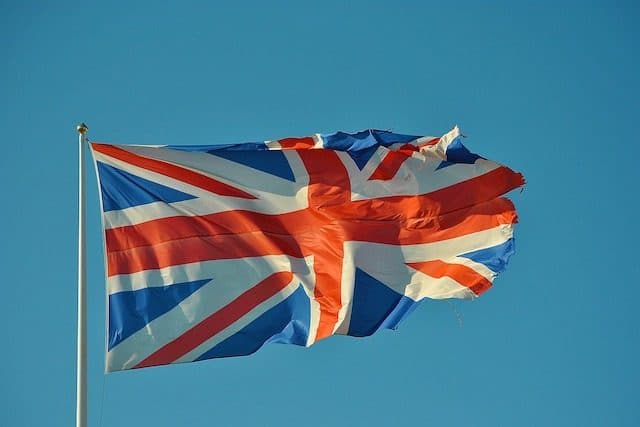
British-American scientific cooperation was widespread during World War II, including through the highly classified Manhattan Project , which led to the development of the atomic bomb. In 1943, the separate British and American nuclear weapons programs were merged under the Quebec Agreement. In 1946, the Americans passed the McMahon Act, which restricted access to American weapons technology. From then on, Britain forged ahead on its own, developing thermonuclear weapons by 1957. But the British fell behind in developing a survivable nuclear deterrent, which the Americans had developed for deployment on nuclear submarines, introducing the Polaris system in the late 1950s.
President John F. Kennedy was a major proponent of Polaris, as well as the restoration of the special relationship between the United States and the United Kingdom. The success of the first Polaris submarines allowed the United States to cancel the Skybolt missile program, a proposed system in which thermonuclear weapons would be launched from aircraft carrying the Skybolt missile. It was originally planned that UK to buy Skybolt system , thereby strengthening its own deterrent and sharing the costs of weapons system research. Following the cancellation of Skybolt, the Kennedy administration suggested splitting Polaris with the Royal Navy. The US agreed to sell British Polaris missiles and launch systems, while Britain provided its own warheads and submarines.
The Polaris Agreement, later amended to include Trident missiles, remains the source of Britain's independent nuclear deterrent. Since 1966, the Royal Navy has maintained at least one nuclear submarine at sea, giving the British government the diplomatic leverage of a full nuclear power. The Polaris Agreement between the United States and Her Majesty's Government has been the foundation of Britain's continued credibility as a nuclear power for over fifty years. amendments, including the Trident II missile and the Dreadnought-class submarine, it will continue to unite the two powers for decades to come.
8. The British Invasion and Rocking London 1964-66
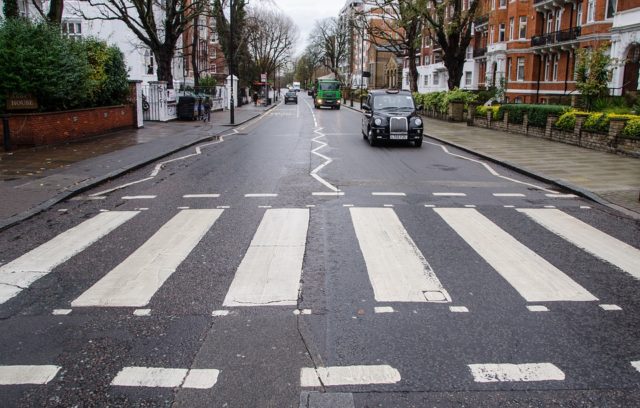
Starting with the Beatles in the early 1960s and continuing to act in films ( "Alfie" , "To Sir", "With Love ), fashion (boots, miniskirts), television (The Avengers, Doctor Who) and international celebrities (Twiggy , Sean Connery, Julie Andrews, David Frost) Britain dominated the entertainment world in the 1960s. The dirty, dreary streets of Britain overnight turned into a swinging London . Led by the Beatles, British music groups dominated the airwaves, especially in the United States, where disposable income flowed into British pockets. By the mid-1960s, the Beatles alone were earning about 650 dollars per second all over the world .
This money, earned in dollars, was converted by the Bank of England into British pounds sterling. Dollars boosted the British economy, saving the pound from devaluation, reducing the national debt. The four Beatles did not receive OBEs from Her Majesty simply because of their popularity. They were at the head of an economic engine that animated the British economy as much as it did British morale. And they were part of a general feel-good movement that grew in Britain throughout the 1960s. In the first year of the decade national service, equivalent to the American draft in Britain, came to an end. Several other changes followed.
In 1967, abortion became legal in the UK with the passing of the Abortion Act. That same year, birth control became widely available under the National Health Service Act 1967. Previously a criminal offence, same-sex acts between consenting adults (21) became legal in England and Wales in 1967, and were extended to Scotland and Northern Ireland in 1980. In 1982, these changes were seen by many conservatives and religious leaders as a reflection of the decline of empire. For others, they signalled newfound personal freedoms, guaranteed and protected by British law.
7. Aberfan Colliery Disaster in 1966.

In October 1966, a coal spoil heap - a pile of waste created by coal mining - illegally built and maintained, slid down a hillside in Wales and wiped out part of the town of Aberfan, where it buried a school and several homes. The landslide killed 144 people, including 116 children. The subsequent investigation blamed the incident on the National Coal Board, which was responsible for creating and maintaining the summit, as well as six others located nearby, all of which had violated existing regulations governing their existence. Although the National Coal Board (NCB) was found liable for the disaster, neither the NCB nor any of its employees were held accountable. Nor was anyone else.
Immediately after the tragedy, Her Majesty Queen Elizabeth categorically refused to visit the site, although her husband, Prince Philip, Duke of Edinburgh, did so. So did Lord Snowdon, her brother-in-law, who is married to Elizabeth's sister, Princess Margaret. Her Majesty waited eight days before going to the scene to meet her subjects. According to some observers of the royal family and its reign, She later regretted it this delay . On the 50th anniversary of the tragedy in 2016, she sent a personal message marking the event and expressing her continuing grief, which was shared by her son and heir Prince Charles.
As of 2022, the Aberfan disaster remains the worst mining disaster in UK history in terms of fatalities. It remains causes bitterness among the families of the dead and the survivors, and a source of deep regret for Queen Elizabeth.
6. Vietnam War

Despite sometimes almost relentless pressure from the administration of U.S. President Lyndon Johnson and his emissaries, the United Kingdom did not actively support American military intervention in Vietnam. But Britain did not escape the Vietnam War. Throughout the 1960s, Queen Elizabeth saw anti-war protests among her subjects and in her dominions. Like the United States, Queen Elizabeth's dominions were divided over American involvement in Vietnam, often bitterly. American-British relations were strained. British peace efforts met with American hostility, especially during Johnson's presidency.
Australia sent troops Vietnam, which remains the longest military intervention in Australian history. So did New Zealand. These actions, which sparked further controversy, ensured that the war and American involvement in Vietnam would remain a source of protest. In the 1960s and 1970s, Elizabeth's sphere of influence saw frequent violent anti-war demonstrations.
During Prime Minister Harold Wilson's tenure in the British government in the 1960s, he described Britain's position of American policy in Vietnam as "negative support" - a bit of political ambiguity that would have made Orwell proud. British opposition to the Vietnam War, and the alliance of British anti-war protesters with those from America and other Western countries, was a focus of Her Majesty's Government in the 1960s and 1970s. Britain took no active part in the war, but found itself divided over America's involvement, another strain in the "special relationship" between the US and Britain.
5. IRA bombings
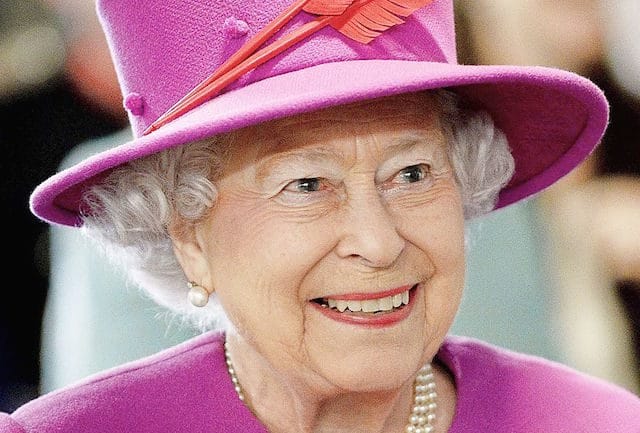
Centuries of bombings, assassinations, military and police counter-terrorism campaigns, riots, civil war and a series of violent incidents in Ireland known collectively as the Troubles ", haunted Queen Elizabeth throughout her reign until the 1980s. In the late 1960s, the British army in Northern Ireland struggled to make peace with the radical Irish Republican Army (IRA) and other terrorist groups. Urban violence in Northern Ireland involving British troops and Irish "revolutionaries" made cities like Belfast the most dangerous in the world. Terrorist bombings also occurred in London and other British cities.
In 1979, the IRA carried out a series of high-profile murders high-ranking officials known for their brutality and audacity. One of the close victims of the bombings was American General Alexander Haig, the former US Secretary of State and later NATO commander. In August 1979, IRA bombs tore apart a yacht, killing Lord Mountbatten, the uncle of Elizabeth's husband, Prince Philip, and several members of his family. Mountbatten was the last Viceroy of India and a distant relative of the Queen. For many observers, the IRA's indiscriminate killings were as brutal as those carried out by Islamic terrorists in later years.
Britain's Conservative governments responded with anti-terrorism tactics, while political factions tried to hammer out agreements that would satisfy all sides. Problems with the Northern Irish government had been a constant feature of life for more than sixty years. Despite progress, terrorist splinter groups continued to create waves of violence In 2007, British Army troops left Northern Ireland after more than three decades and more than 1,400 casualties during their lengthy deployment. The Troubles remain a black mark on Elizabeth II's long reign.
4. Return of Hong Kong and visit to China
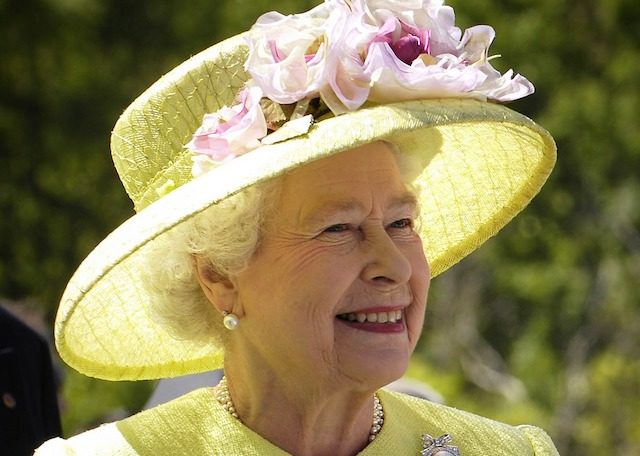
Except for the period of Japanese occupation during World War II (1941–45), Hong Kong has been a British colony since 1841. Britain gained the territory by right of conquest during the Opium Wars and expanded its borders and holdings over the remainder. 19 and in the beginning 20 vv . When the communist People's Republic of China (PRC) won a seat on the United Nations Security Council, it began a campaign to reclaim the territory, as well as the Portuguese-controlled territory of Macau. By the 1970s, the PRC had formally recognized the British administration of Hong Kong but denied its sovereignty over the territory.
When Britain entered into extensive negotiations to return Hong Kong to Chinese sovereignty, disagreements arose, exacerbated by perceived Chinese sabre-rattling. Finally, after years of diplomatic compromise, including the first visit of a sitting British prime minister (Margaret Thatcher) to Hong Kong, the British agreed to return sovereignty over the territory to China in 1984. . Queen Elizabeth visited the city in 1986 (her second trip to Hong Kong, the first in 1975). The formal handover of the territory took place in accordance with the agreement July 1, 1997 Prince Charles represented the monarchy at the official handover.
When Elizabeth ascended the throne in 1952, the disintegration of the British Empire had already been underway for some time. The handover of Hong Kong marked the end of the British Empire for many. In 2002, Parliament introduced the term "British Overseas Territories" to describe the 14 remaining territories still under crown control.
3. 1992 and the year of scandals for the royal family

Throughout her long life, before and during her reign as Queen, Elizabeth remained free of personal scandal or even controversy. Her life was dedicated to service, beginning as a young princess during World War II. Unfortunately for Her Majesty, the same cannot be said for her family. Elizabeth's sister, Margaret, was involved in several sex scandals , a public and embarrassing divorce, and a scrutiny of her personal life that provided fodder for tabloid newspapers on both sides of the Atlantic. Elizabeth's son Andrew's public behavior led to , that the British press christened him " Randy Andy ", decades before his connection to Jeffrey Epstein and child abuse allegations. He was eventually removed from his royal duties due to his deteriorating reputation.
But it was the fraught relationship between her son Prince Charles, his wife Princess Diana and those who invaded their marriage that led Her Majesty to dub 1992 Annus Horrible , “…not a year I shall look back on with undiluted pleasure.” That same year, her daughter Anne divorced her husband, Captain Mark Phillips, after a tabloid-fuelled scandal in which both parties were linked to outsiders. The Duchess of York, the former Sarah Ferguson, and her husband, the aforementioned Randy Andy, cooked up a slew of salacious photo stories for the press, leading to their separation and eventual divorce. Then there was Diana and Charles’s split, punctuated by the publication of conversations between the Princess of Wales and James Gilbey.
The following year, another recording containing intimate and embarrassing conversations between Prince Charles and Camilla Parker Bowles, brought further sighs and tuts about the behaviour of the royal family. While much of the world found the Windsors' behaviour reprehensible, Her Majesty retained the legendary British "toughness" and weathered the storm. Since then, further scandals have arisen, though Elizabeth has continued to overcome them.
2. The Death of Princess Diana
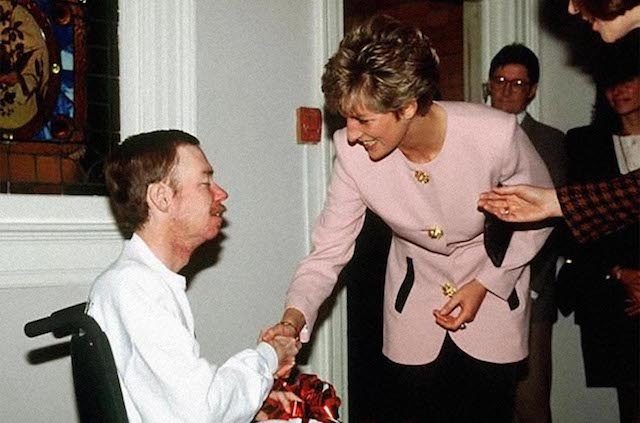
Death princess diana provoked an international outpouring of shock and grief. The former wife of one heir to the British throne and mother of another was elevated to near-saint status in the world's press and media. Thousands flocked to Buckingham Palace to pay their respects in the form of flowers, cards and letters, banners and posters, and vigils. Celebrities paid their respects around the clock. However, criticism of the Queen and the Royal Family predominated. Among the complaints was the absence of the Royal Standard flying at half-mast over the palace. The Queen was not at the palace at the time, and the Royal Standard was flown at Balmoral, her then residence, as was required by current protocol.
The period of mourning and funeral revisited the events that led to Diana's divorce from Charles, and presented her as a model mother to Princes William and Harry. At the same time, the Queen and the Royal Family came under intense criticism for their treatment of Diana while she was alive, as well as their perceived indifference to her tragic death. Perhaps inevitably, conspiracy theories arose, some of which link British intelligence, French intelligence and even Prince Philip, the Duke of Edinburgh and the Queen's husband, to Diana's death. Many of them remain the subject of controversy to this day.
Diana continued to be lionized decades after she died in a car crash in which the driver was three times the legal drink limit in France. Her tragic Death shook the monarchy , although over time Elizabeth, initially harshly criticized, rose in the eyes of most of her subjects.
1. The marriage of Prince Harry and Meghan Markle

Throughout her long reign, Elizabeth maintained a difficult relationship with the British press, including numerous lawsuits , initiated by Her Majesty and her family. The press responded with critical and sometimes salacious coverage of the royals, both in their professional performance and in their private lives. The Queen's advancing age has forced her to gradually reduce her public appearances, particularly since the death of her husband, Prince Philip, in 2021. Throughout her reign, public approval of the monarchy as an institution has waxed and waned, although the Queen's personal approval has remained high. In 2012, the year of her Diamond Jubilee, it reached 90%.
In 2017, Prince Harry, the youngest son of Prince Charles and Princess Diana, announced his engagement to Meghan Markle, a biracial divorcee who also happens to be (gasp) American. Elizabeth’s uncle had abdicated the throne decades earlier to marry an American divorcee, and while the likelihood of Harry ever ascending to the throne was remote, it nonetheless demonstrated how public attitudes had changed during Elizabeth’s reign. Meghan’s public acceptance was near-universal. Later events have shown that she was less readily welcomed in the royal family’s private chambers. Prince Philip advised his grandson not marry his fiancee. Meghan and Harry eventually gave up their royal duties and moved to America, and their subsequent royal appearances point to an ongoing rift among the Windsors. Yet Her Majesty has emerged above the fray.
Louis XV of France is said to have commented, “Apres moi, les deluge,” meaning “After me, the deluge.” This quote is said to express indifference to events once a person is dead and gone. This cannot be said to apply to Queen Elizabeth II. Despite the machinations of some members of her family and the arguments for the abolition of the monarchy that occasionally arise in British society, Her Majesty has served her people for over seven decades with patience, fortitude, and regal dignity. The public at large recognizes and respects her dedication. No matter who or what will inevitably replace it as head of the British state, she will be difficult to follow.














Оставить Комментарий